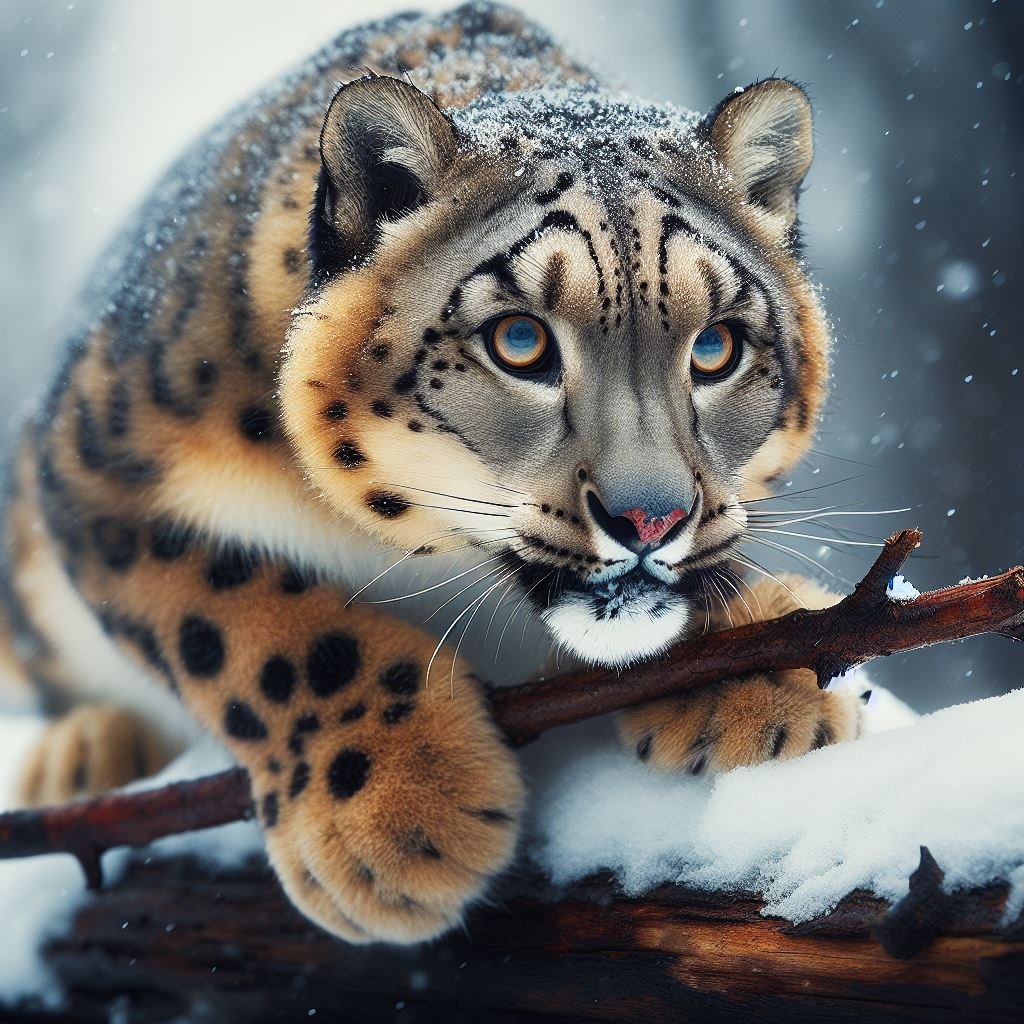Carnivore of the Snow

The image we typically have of carnivores is either in grassland or in a lush green forest. Rarely do people imagine carnivores in cold, mountain ranges; the snow leopard has maintained its prestige as the “carnivore of the snow”.
There has been a steady increase in the population of snow leopards in Nepal, one report mentions that in 2009 around 358 snow leopards were counted in Western, Rolwalingm Sagarmatha, and Kanchenjunga.
The numbers of snow leopards seem to be increasing due to conservation efforts.
However with the rise of the population of snow leopards like in the case of tigers, human-wildlife conflict arise.
The Snow leopard diet includes 33% of domestic animals and 67% wild animals (blue sheep and Himalayan tahr).
In one case a report noted that a snow leopard hunted down 57 goats and destroyed the owners’ entire livelihood.
The conservation action plan has a budget of $3.15 million that goes into research, conferences, and reviews, with not much budget for the farmers.
This sadly causes retaliatory killings of snow leopards which is becoming a major challenge in saving the species.
Rinzin Phunjok Lama, who has been working in the field of conservation since 1990, has ideas on how to avoid livestock being eaten by snow leopards which could be a greater contribution to generating livelihood for locals in Humla region.
Rinzin emphasized smaller livestock as snow leopards try to attack small animals, financial relief, and livelihood diversification to mitigate human-wildlife conflict.
Researchers know that a Snow Leopard is needed for every 150 blue sheep inorder to cull their wild population and reduce over population in grassland.
It is important to continue conservation efforts. A decline in snow leopards would also affect the vulture population, since snow leopards leave prey carcasses behind that vultures rely on.
Besides the snow leopards, researchers are increasingly worried about the Pallas Cat and Himalayan Grey Wolf which are becoming dangerously extinct in Nepal and are down to approximately 50 in population.
Issues of rising temperatures leading to loss of habitat, and forest fires, alongside poaching and smuggling all contribute to the dwindling number of snow leopards.
Lack of farmer education, leading to retaliatory killings need to be immediately stopped.
There is a need for even more intense research, conservation and education on the Himalayan snow leopards, documentaries that shed light on the condition of Nepali wildlife are essential in the efforts of spreading awareness to the local community and the world, helping to preserve the biodiversity.
Author
Kripendra Amatya, Researcher, Nepa~laya Productions
Editor
Dana Moyal Kolevzon, Director of International Relations, Nepa~laya Productions
Published Date
January 1, 1970



